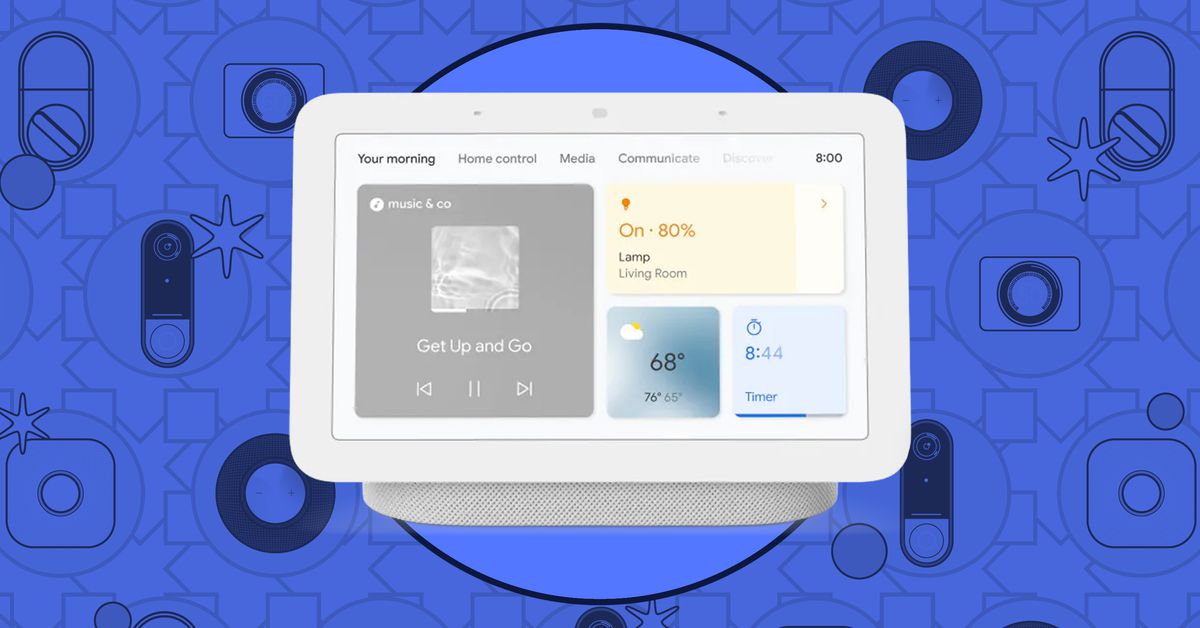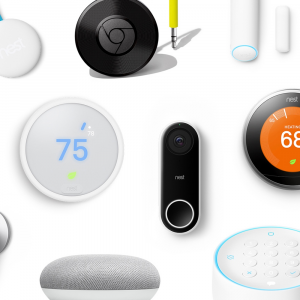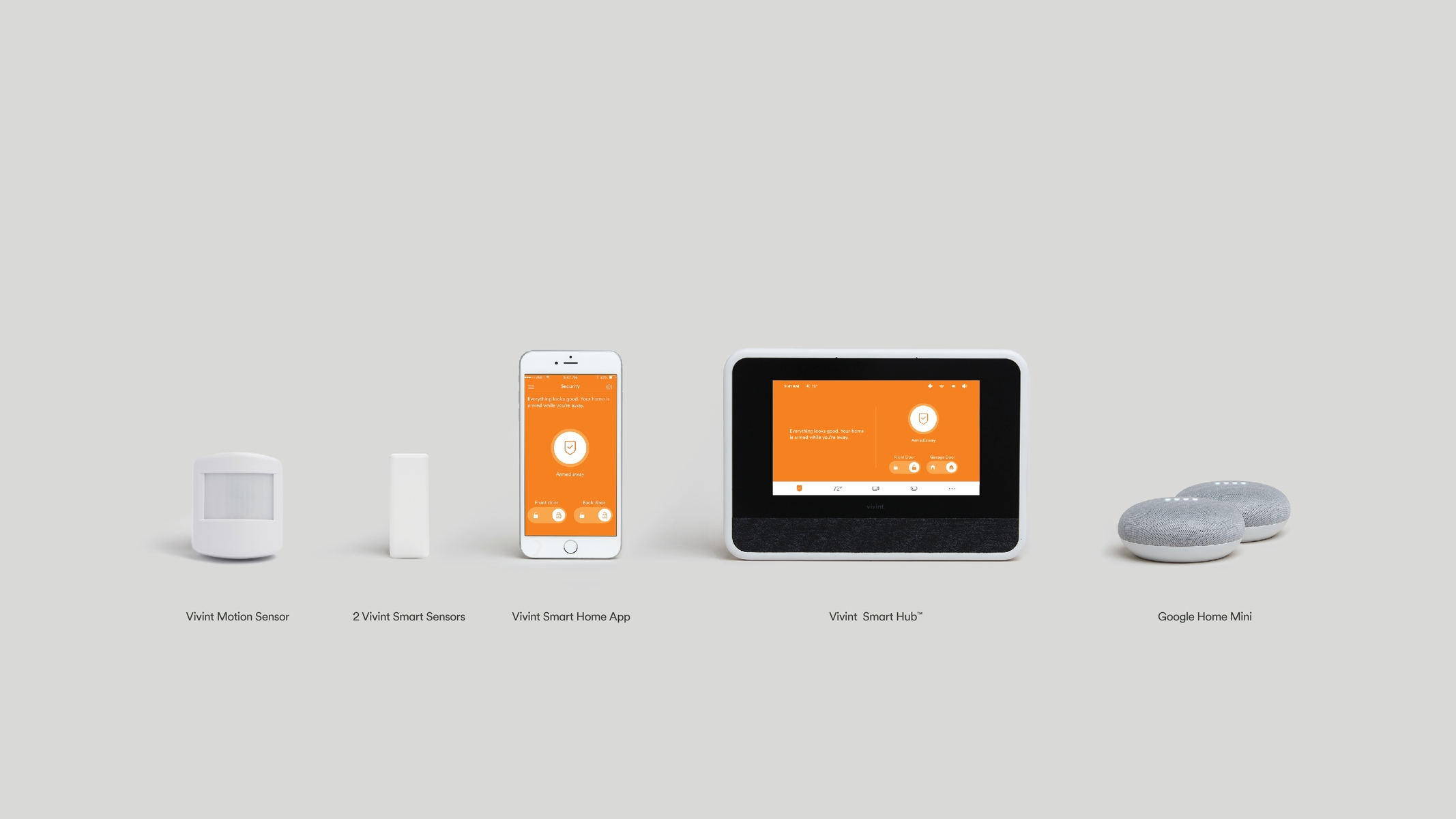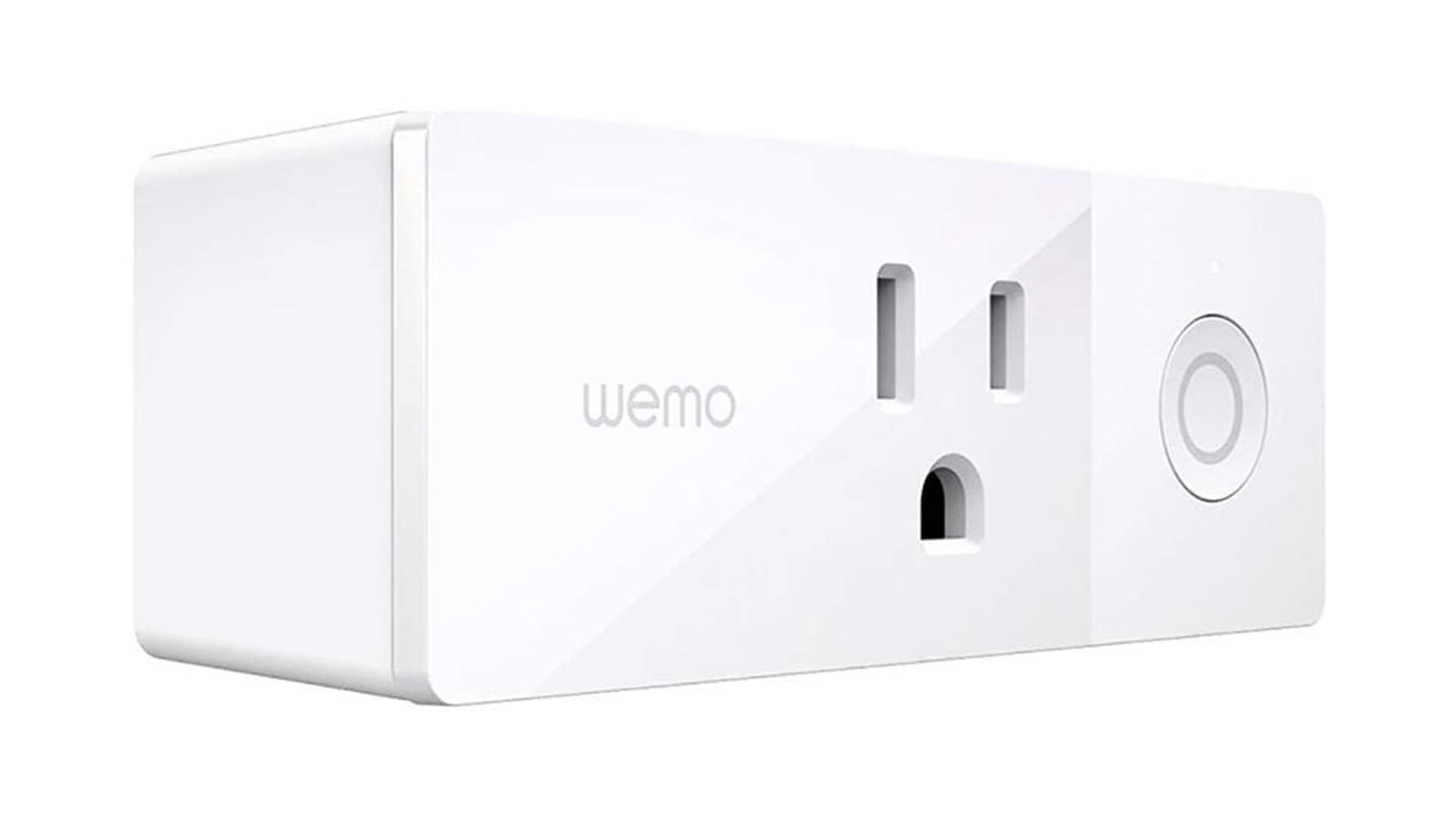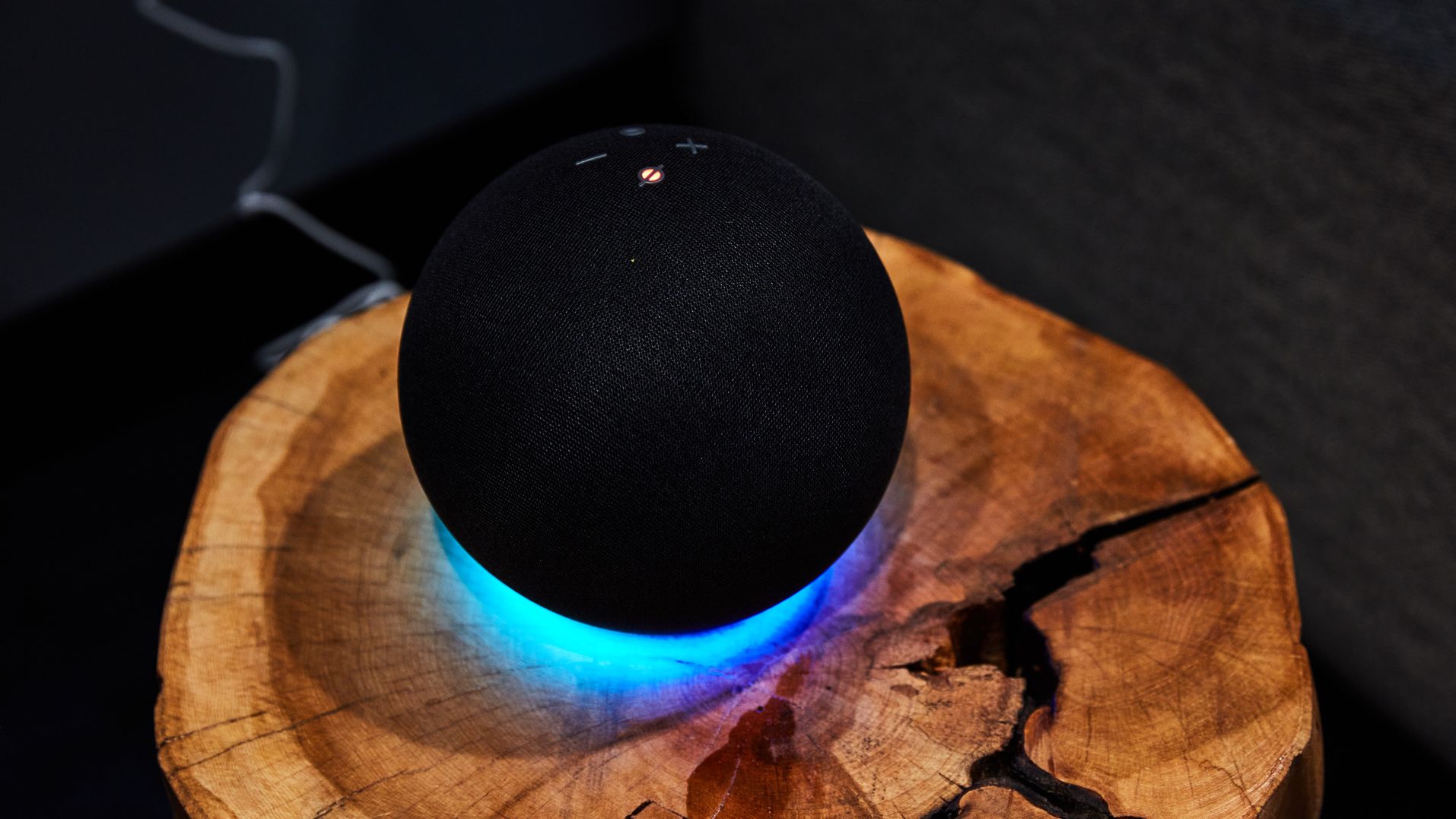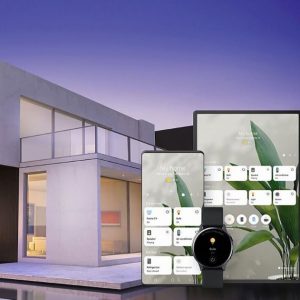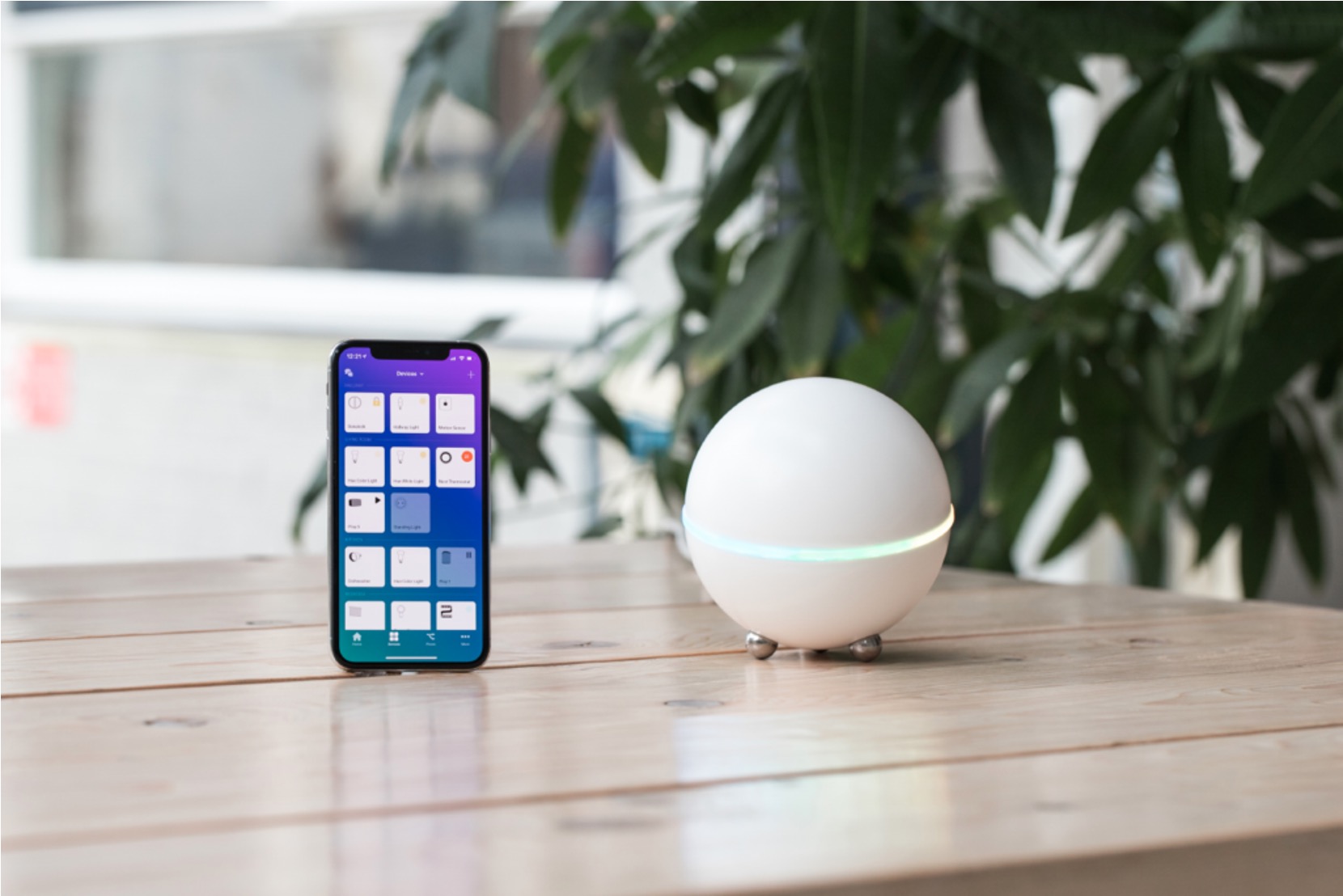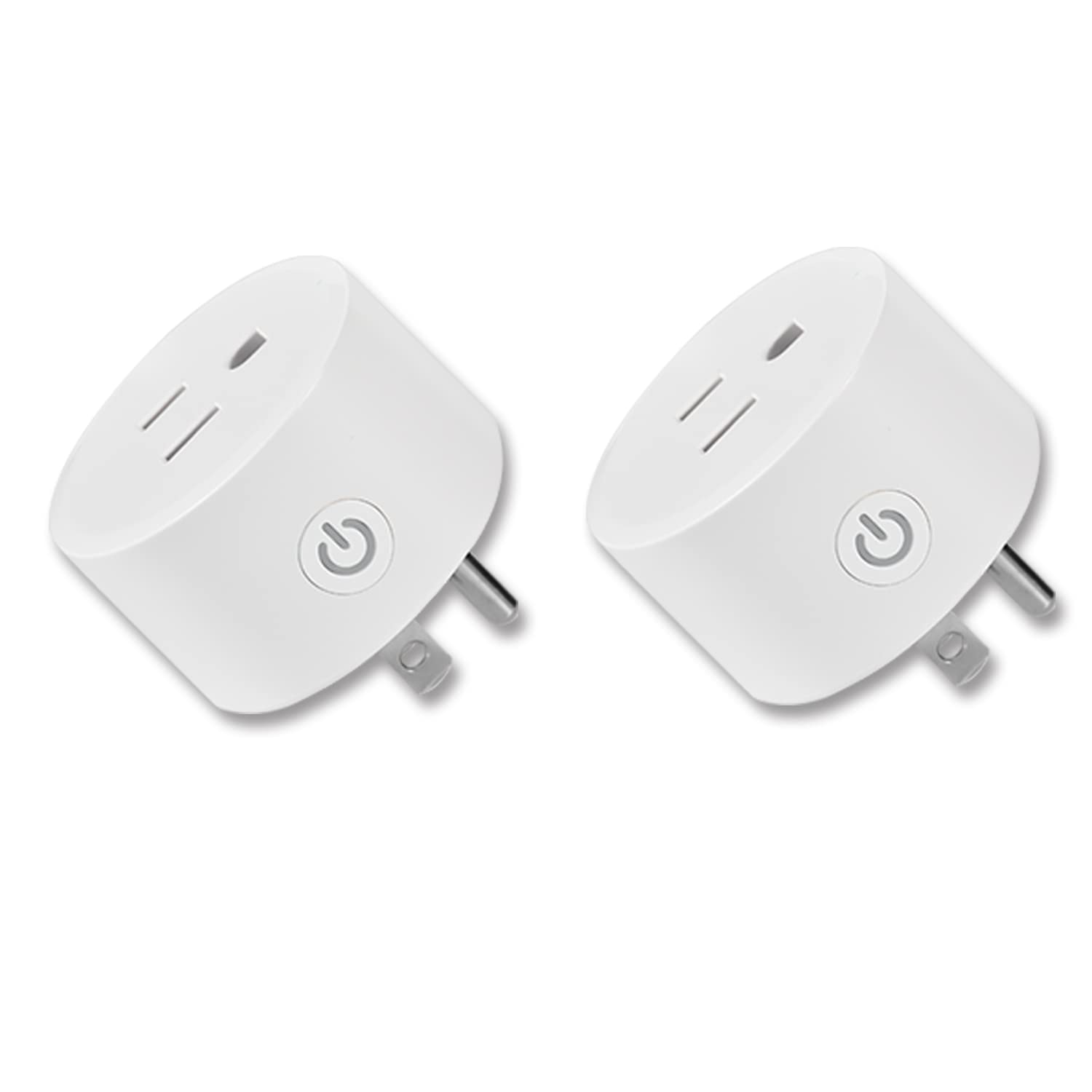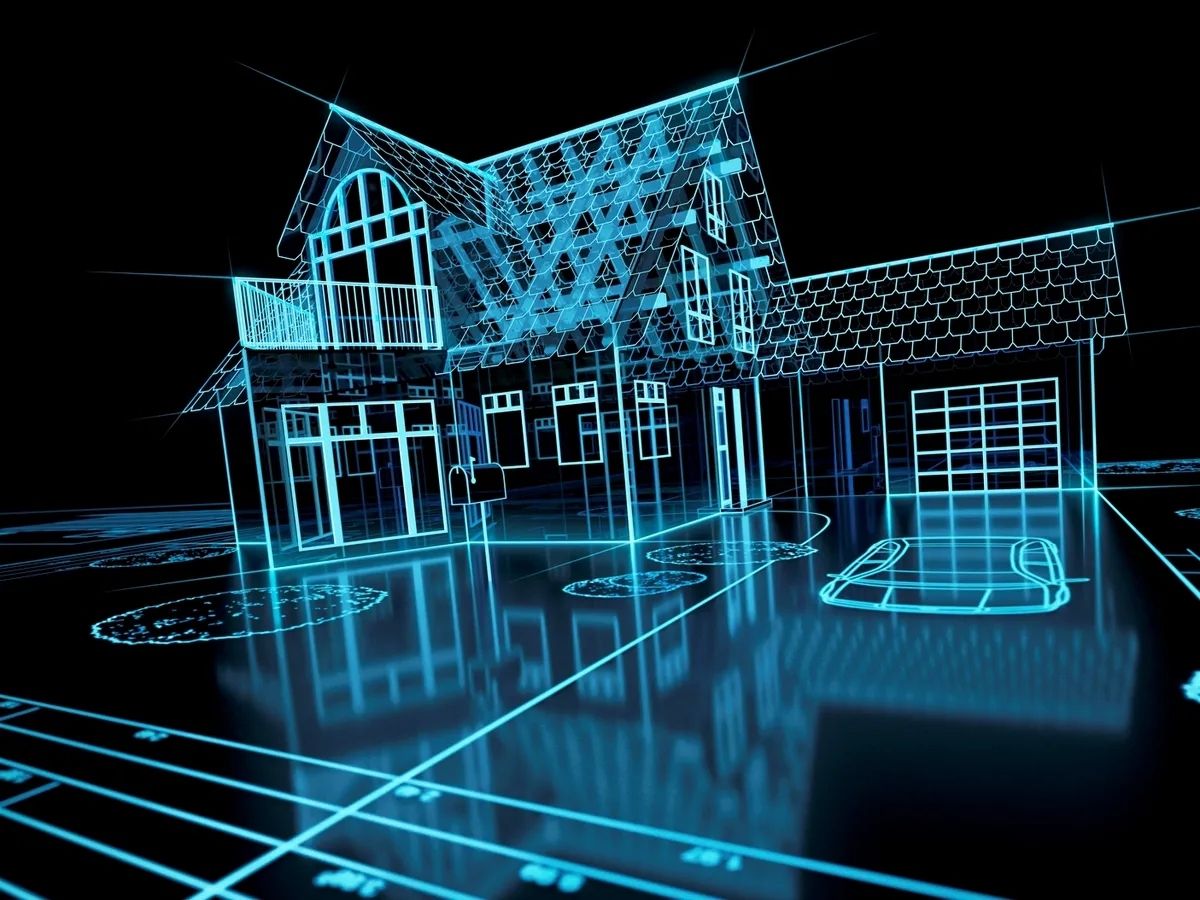Introduction
Welcome to the world of smart homes, where technology seamlessly integrates with our daily lives to make them more convenient, efficient, and secure. With devices like smart speakers, thermostats, lights, and security systems becoming increasingly popular, it’s essential to have a centralized control system that can manage them all. This is where a smart home hub comes into play.
A smart home hub serves as the command center for all your smart devices, allowing you to control and automate various aspects of your home seamlessly. These hubs provide a central point of communication and enable you to manage your smart devices through a single interface, making it easier than ever to create a truly smart and connected home.
One of the leading players in the smart home hub arena is Google with its Google Home ecosystem. Combining the power of Google Assistant, a voice-controlled virtual assistant, with a smart home hub, Google Home offers a range of features and benefits that enhance the overall smart home experience.
In this article, we will explore why having a smart home hub, specifically Google Home, is essential for anyone looking to embrace the world of smart living. Whether you’re a tech enthusiast, a busy professional, or simply someone who wants to simplify their daily routines, a smart home hub can truly revolutionize the way you interact with your home.
So, let’s dive in and discover the fascinating world of smart home hubs and delve into the reasons why you need a smart home hub with Google Home.
What is a Smart Home Hub?
A smart home hub is a centralized device that serves as the control center for all your smart devices. It acts as the bridge between various smart devices, allowing them to communicate with each other and enabling you to manage and control them from a single interface.
Think of a smart home hub as the conductor of an orchestra, coordinating and synchronizing the different components of your smart home ecosystem. It brings together devices such as smart speakers, thermostats, cameras, lights, and locks, allowing you to control them using a single app or voice commands.
At its core, a smart home hub connects wirelessly to your devices via Wi-Fi, Bluetooth, or other wireless protocols, such as Zigbee or Z-Wave. It acts as a hub or central point of communication, ensuring that your devices can interact with one another seamlessly.
One of the key advantages of a smart home hub is its ability to integrate devices from different manufacturers or brands. In the absence of a hub, you may find yourself dealing with multiple apps and interfaces, each tailored for a specific device. This can make the overall smart home experience fragmented and inconvenient.
With a smart home hub, however, you can bring all your devices under one roof, figuratively speaking. It allows you to control and manage them using a single app or voice commands, offering a unified and streamlined user experience.
Furthermore, a smart home hub provides additional functionalities beyond simple control. It enables you to create automation routines, set schedules, and even control your devices remotely when you’re away from home. This level of automation and convenience is what sets a smart home hub apart from standalone smart devices.
Overall, a smart home hub acts as the brain of your smart home ecosystem, providing the necessary connectivity, control, and automation features needed to transform your ordinary home into an intelligent and connected living space.
Benefits of a Smart Home Hub
A smart home hub offers numerous benefits that enhance the functionality, convenience, and security of your smart home. Here are some key advantages of having a smart home hub:
- Centralized Control: A smart home hub provides a centralized control system for all your smart devices. Instead of managing each device separately, you can control and monitor them all through a single interface, whether it’s a mobile app or voice commands.
- Integration of Devices: A smart home hub eliminates the need for multiple apps and interfaces by integrating devices from various manufacturers. This means that you can control and manage different brands of smart devices from one unified platform.
- Automation and Scheduling: With a smart home hub, you can create automation rules and schedules to streamline your daily routines. For example, you can set your lights to turn on automatically when you arrive home or schedule your thermostat to adjust the temperature based on your preferences.
- Voice Control: Many smart home hubs, including Google Home, offer voice control capabilities. This means that you can use voice commands to control your smart devices, play music, ask for weather updates, and even get answers to your questions through the integrated virtual assistant.
- Remote Access: A smart home hub enables remote access to your devices, giving you the ability to control and monitor them even when you’re away from home. This can be particularly useful for security purposes or when you want to make sure your home is ready for your arrival.
- Enhanced Security: A smart home hub can significantly enhance the security of your home by providing centralized control over security devices such as cameras, door locks, and alarms. You can receive instant notifications and monitor your home’s security in real-time, giving you peace of mind.
- Expandability and Compatibility: A smart home hub offers expandability and compatibility options, allowing you to add new devices and integrate them seamlessly. This means that as your needs evolve and new smart devices hit the market, you can easily incorporate them into your existing smart home ecosystem.
- Energy Efficiency: By managing and automating your smart devices through a hub, you can optimize energy usage and improve overall efficiency. For example, you can set schedules for lights and thermostats to conserve energy when no one is home or adjust them based on environmental conditions.
These are just a few of the many benefits that a smart home hub provides. It offers a level of control, automation, and convenience that can truly transform your living environment and make your everyday tasks easier and more enjoyable.
Google Home as a Central Control Hub
When it comes to smart home hubs, Google Home stands out as one of the leading options available in the market. With its powerful integration capabilities and advanced features, Google Home provides a seamless and intuitive experience for controlling your smart devices.
Google Home serves as a central control hub by connecting to a wide range of smart devices using various protocols, including Wi-Fi, Bluetooth, and Zigbee. This allows you to manage and control multiple devices from different manufacturers using a single Google Home app or through voice commands with Google Assistant.
By making Google Home the central control hub of your smart home, you can easily access and control your devices, create automation routines, and enjoy a cohesive smart home experience. From adjusting your lights and thermostat to streaming music and checking your calendar, Google Home brings all your connected devices together in one place.
What sets Google Home apart as a central control hub is its integration with Google Assistant, a voice-controlled virtual assistant powered by artificial intelligence. Google Assistant is capable of understanding natural language and responding to a wide range of commands, making it easy and convenient to interact with your smart devices.
With Google Home, you can simply use your voice to control your smart home. Whether you want to turn off the lights, adjust the temperature, lock the doors, or even play your favorite song, just say “Hey Google” followed by your command, and Google Assistant will take care of it.
In addition to voice control, Google Home offers a user-friendly app that allows you to control and manage your smart devices from your smartphone or tablet. The app provides a visually appealing and intuitive interface where you can organize your devices, create automation routines, and customize your smart home settings to suit your preferences.
Furthermore, Google Home is not limited to controlling smart devices within your home. It also integrates seamlessly with other Google services, such as Google Calendar, Google Maps, and Google Chromecast. This means that you can access your personal schedule, get traffic updates, and even stream content to your TV with a simple voice command.
Overall, Google Home excels as a central control hub by offering a combination of versatile connectivity options, intuitive voice control, and integration with other Google services. It provides a cohesive and user-friendly experience, making it an excellent choice for anyone looking to create a smart home ecosystem.
Integration with Multiple Devices
One of the significant advantages of using Google Home as a smart home hub is its exceptional integration capabilities with a wide range of smart devices. Google Home serves as a centralized platform that seamlessly connects and controls multiple devices, making it easier to manage your entire smart home ecosystem.
Google Home offers compatibility with various smart devices, including lights, thermostats, cameras, smart locks, and more. It supports popular brands like Philips Hue, Nest, August, and TP-Link, among others. This extensive compatibility ensures that you have a wide selection of devices to choose from when building your smart home.
Setting up and integrating your devices with Google Home is a breeze. It involves simple steps such as connecting the smart device to your Wi-Fi network and linking it to your Google Home app. Once connected, you can control these devices individually or create groups to control multiple devices simultaneously.
With Google Home, you have the flexibility to control your devices using your voice, the Google Home app, or even through third-party apps that integrate with Google Assistant. This means you can manage your smart home ecosystem from anywhere, whether you’re at home or remotely accessing your devices.
In addition to controlling your devices, Google Home’s integration capabilities extend to automation. You can create custom routines and schedules for your devices to perform specific actions automatically. For example, you can set up a “Good Morning” routine that turns on the lights, adjusts the thermostat, and plays your favorite news podcast when you say “Hey Google, good morning.”
Moreover, Google Home works seamlessly with other Google services, allowing for enhanced integration and control. For instance, you can integrate your Google Calendar with Google Home, enabling you to ask about your schedule or set reminders with simple voice commands. You can also sync your Google Photos account to display personal photos on compatible devices like smart displays.
Google Home’s integration capabilities extend to entertainment as well. It can control media streaming devices, such as Chromecast, allowing you to play music, videos, and more from various streaming services using just your voice. The ability to integrate entertainment devices adds another layer of convenience and control to your smart home experience.
In summary, Google Home excels in its ability to seamlessly integrate with a wide range of smart devices, both inside and outside the home. Whether it’s lighting, heating, security, or entertainment, Google Home serves as a central hub that allows you to control and automate multiple devices using a single interface or through voice commands.
Voice Control with Google Assistant
A key feature that sets Google Home apart as a smart home hub is its integration with Google Assistant, a powerful voice-controlled virtual assistant. With Google Assistant, you can control your smart home devices using simple voice commands, adding a new level of convenience and hands-free operation to your smart home experience.
Google Assistant understands natural language and can interpret a wide range of voice commands, making it easy to control your smart devices with ease. Whether you want to turn on the lights, adjust the thermostat, lock the doors, or even start your robotic vacuum cleaner, you can do it all by simply speaking to Google Assistant.
Using voice commands enables you to control your devices effortlessly, especially when your hands are busy or when you’re in another room. Just say “Hey Google” or “Ok Google” followed by your command, and Google Assistant will execute the action for you.
Google Assistant’s voice control capabilities extend to a variety of smart devices, including lights, thermostats, cameras, door locks, and more. The device compatibility and integration with numerous brands allow you to control multiple devices with a single voice command, making it a convenient solution for managing your entire smart home ecosystem.
In addition to controlling individual devices, Google Assistant can help you create custom routines to streamline your daily activities. Routines allow you to combine multiple actions into a single voice command or trigger event. For example, you can create a “Movie Night” routine that turns off the lights, lowers the blinds, and starts playing your favorite movie when you say “Hey Google, movie night.”
Furthermore, Google Assistant integrates with other Google services, giving you access to a wealth of information and features. You can ask Google Assistant for the latest news updates, weather forecasts, traffic information, and even sports scores. This integration with Google services adds another layer of functionality and convenience to your smart home ecosystem.
With its advanced voice control capabilities, Google Assistant aims to make your smart home experience more intuitive and effortless. The ability to control your devices using voice commands brings a sense of futuristic technology right into your home, allowing you to interact with your smart home devices in a natural and seamless manner.
Whether you’re cooking in the kitchen, relaxing on the couch, or getting ready for bed, you can easily control and manage your smart home devices hands-free with the power of voice commands through Google Assistant and Google Home.
Streamlining Home Automation with Routines
Home automation is a key aspect of the smart home experience, and Google Home takes it a step further by offering the ability to create custom routines. Routines in Google Home allow you to streamline and automate multiple actions with a single voice command or trigger event, making your daily routines more efficient and convenient.
With routines, you can combine a series of actions into a single command that can be triggered by a specific phrase, a specific time, or even your location. This allows you to create personalized routines tailored to your specific needs and preferences.
For example, you can create a “Good Morning” routine that turns on the lights, adjusts the thermostat, and starts playing your favorite music when you say “Hey Google, good morning.” This routine helps you start your day off on the right foot by automating tasks that you typically perform every morning.
In addition to predefined routines, Google Home allows you to create custom routines based on specific triggers or events. You can set your lights to turn on automatically when you enter a room or have your coffee maker start brewing when you disarm your home security system.
Routines can also be scheduled to occur at specific times throughout the day. For example, you can set a routine to turn off all the lights and lower the temperature when it’s time for bed. These scheduled routines can help you conserve energy and ensure that your home is optimized for your preferred comfort levels.
Furthermore, Google Home allows you to create location-based routines using geofencing technology. With this feature, you can set up a routine to trigger when you leave or arrive at a specified location. For instance, you can have your lights turn off automatically and your security system arm itself when you leave home, and have them turn on and disarm when you return.
Routines not only simplify your daily tasks but also add a level of automation and convenience to your smart home experience. By automating multiple actions with a single command or trigger event, you can save time and effort while enjoying the benefits of a seamlessly connected home.
It’s important to note that as your smart home ecosystem evolves and new devices are added, you can easily update and customize your routines to accommodate these changes. Google Home offers a flexible platform that allows you to adapt and refine your routines to suit your evolving needs.
With routines, Google Home empowers you to create a personalized and automated smart home experience that suits your lifestyle, making it easier and more enjoyable to control and manage your smart devices.
Enhancing Smart Home Security with a Hub
Enhancing the security of your smart home is a top priority, and a smart home hub like Google Home can play a crucial role in achieving that goal. By acting as a central control hub for your security devices, Google Home enhances the overall security of your smart home ecosystem in several ways.
One of the primary benefits of using Google Home for smart home security is the ability to monitor and control security devices from a single interface. By integrating compatible cameras, door locks, and alarm systems with Google Home, you can easily monitor and manage these devices from your smartphone or through voice commands with Google Assistant.
With Google Home’s centralized control, you can receive real-time notifications and alerts for security events such as motion detection, door open/close, or even unauthorized access attempts. This immediate alert system ensures that you stay informed about any potential security threats in and around your home.
Moreover, Google Home enables you to actively engage with your security devices. For example, you can use voice commands to view live camera feeds on a compatible device or remotely lock/unlock your doors. This level of control gives you peace of mind and adds an extra layer of convenience to your smart home security.
Google Home also offers the ability to create custom security routines or automation scenarios. For instance, you can set up a routine that turns on specific lights and activates your security system whenever you leave home. These routines contribute to a more secure environment by ensuring that your home is protected even when you’re not present.
Moreover, Google Home’s compatibility with third-party security systems allows you to integrate additional security features into your smart home ecosystem. For example, you can connect your Google Home to a professional monitoring service, enabling quick response and assistance in case of emergencies.
Furthermore, Google Home can be integrated with smart doorbell cameras and intercom systems, allowing you to see and communicate with visitors even when you’re away from home. This feature enhances the security and convenience of managing visitors to your property.
By using Google Home as a central hub for your smart home security, you can enjoy a streamlined and comprehensive security system that brings all your devices together. From monitoring and controlling security devices to creating custom routines and integrating third-party services, Google Home provides the tools you need to enhance the security of your smart home.
Remember, while Google Home can significantly enhance the security of your smart home, it’s essential to follow best practices for securing your devices and network. Regularly update device firmware, use strong and unique passwords, and ensure your network is properly secured to maximize the effectiveness of your smart home security.
Compatibility and Expansion Options
When choosing a smart home hub, compatibility with a wide range of devices is crucial to ensure that you can fully leverage the benefits of a connected home. Google Home excels in this area, offering extensive compatibility with various smart devices, making it a versatile and flexible choice for your smart home ecosystem.
Google Home is compatible with numerous smart home devices from popular brands, ensuring that you have a wide range of options to choose from when expanding your smart home. Whether you’re looking to integrate smart lights, thermostats, security cameras, door locks, or even robotic vacuums, chances are Google Home supports them.
With Google Home, you can control and manage these devices using a single app or through voice commands with Google Assistant. This means that you no longer need to juggle multiple apps to control different devices. Instead, you can consolidate everything into one unified platform, simplifying and streamlining your smart home management.
In addition to its wide compatibility, Google Home also offers expansion options to accommodate the evolving needs of your smart home. As new devices and technologies emerge, Google Home continues to update and expand its compatibility list through firmware updates and integration partnerships.
Furthermore, Google Home supports third-party integrations, allowing you to connect and control devices that are not natively supported. With the help of Google Assistant and APIs, you can integrate your favorite smart devices or even build custom integrations to suit your unique requirements.
Google Home also supports smart home protocols such as Zigbee and Z-Wave through additional devices like smart hubs or bridges. This wider compatibility ensures that you can add devices utilizing these protocols to your Google Home ecosystem seamlessly.
With Google Home, the possibilities for expanding and enhancing your smart home are virtually limitless. Whether you want to add new devices, integrate existing ones, or explore the potential of third-party integrations, Google Home provides a flexible platform that enables your smart home ecosystem to grow alongside your needs and preferences.
Lastly, the compatibility and expansion options offered by Google Home extend beyond smart home devices. Google Home integrates with popular services and platforms, allowing you to control other aspects of your digital life. From accessing and managing your Google Calendar to streaming music and videos from various services, Google Home extends its functionality to enhance your overall connected experience.
In summary, Google Home provides extensive compatibility with a wide range of smart devices, allowing you to build a comprehensive smart home ecosystem. With its commitment to expansion and integration options, Google Home ensures that you can continue to add and integrate new devices and services as your smart home needs grow and evolve.
Conclusion
In conclusion, a smart home hub plays a crucial role in simplifying and enhancing your smart home experience, and Google Home proves to be an excellent choice. With its capabilities as a central control hub, Google Home offers seamless integration, advanced voice control, and a wide range of compatibility options.
By centralizing the control of your smart devices, Google Home eliminates the need for multiple apps and interfaces, providing a unified and streamlined user experience. The integration with Google Assistant allows you to control your smart devices effortlessly through voice commands, adding a new level of convenience and hands-free operation.
With Google Home, you can benefit from features like custom routines, automation, and scheduled actions that help streamline your daily routines and make your life more efficient. The ability to expand and integrate with various devices and services ensures that your smart home can grow and adapt to your changing needs.
Furthermore, Google Home enhances the security of your smart home by serving as the centralized control hub for your security devices. You can monitor and control your security cameras, locks, and alarms from a single interface, ensuring a more secure and protected living environment.
The compatibility and expansion options offered by Google Home make it a versatile and future-proof choice for your smart home ecosystem. Whether it’s integrating devices from different manufacturers, connecting with third-party services, or expanding with new emerging technologies, Google Home provides the flexibility you need to create a truly connected and intelligent home.
In summary, Google Home as a smart home hub brings together the power of centralized control, voice commands, and extensive compatibility to create a seamless and convenient smart home experience. With Google Home, you can transform your house into a smart home that simplifies your daily routines, enhances your security, and adapts to your evolving needs.







